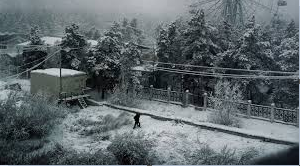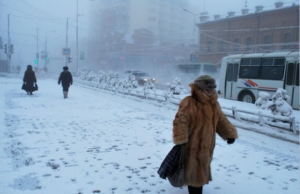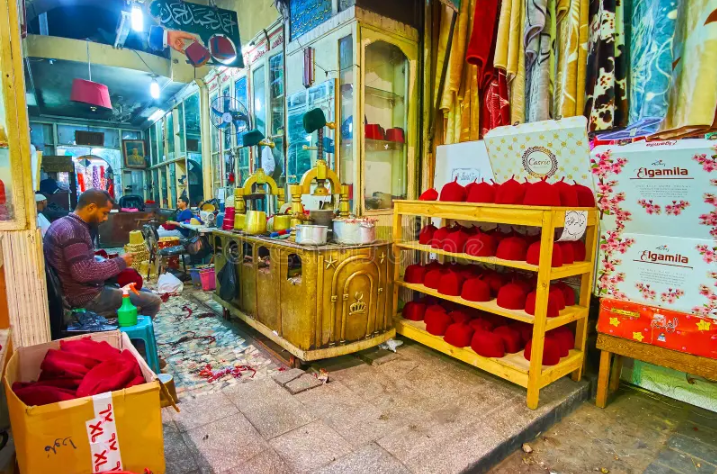World’s Coldest City: If you think winter in your city is cold, imagine living in a place where the temperature regularly drops below -40°F (-40°C), and residents go about their daily lives in the harshest conditions on Earth. Greetings from the coldest city in the world, Yakutsk, Russia. In this blog post, we’ll explore Yakutsk using the PSA copywriting framework. Identifying the Problem of extreme cold, showcasing the Solutions that help residents adapt, and guiding you on how to take Action if you want to learn more or even visit this extraordinary place.
The Challenges of Living in the World’s Coldest City

This city is not a place for the weak of the heart. The city is located in the Siberian region of Russia, known for its harsh winters and relentless cold. Here are the main challenges faced by the residents.
- Extreme Cold Temperatures: Yakutsk holds the title of the world’s coldest city, with winter temperatures regularly dropping to -58°F (-50°C) or lower. In 1891, the lowest temperature ever recorded in Yakutsk was -83.9°F (-64.4°C).
- Limited Daylight in Winter: During the winter months, the sun barely rises, with only a few hours of dim light each day. The lack of sunlight can lead to seasonal affective disorder (SAD) and other health issues.
- Frozen Infrastructure: The permafrost, a layer of permanently frozen ground, makes construction challenging. Buildings must be specially designed to withstand the shifting, frozen earth, and basic services like water and sewage require innovative solutions.
- Impact on Daily Life: The extreme cold affects every aspect of daily life, from transportation and food supply to how people dress and interact. Frostbite is a constant risk, and residents need to take special precautions just to go outside.
How Yakutsk Adapts to the Extreme Cold

Despite the severe conditions, Yakutsk is home to over 355,000 people, making it the largest city built on permafrost. The people of Yakutsk have found innovative ways to adapt and thrive in their frigid environment. Here’s how they do it:
- Unique Architecture for Permafrost
One of the biggest challenges of living in Yakutsk is building on permafrost. The ground is frozen year-round, making traditional construction methods ineffective. To prevent buildings from sinking or cracking, structures in Yakutsk are built on stilts or concrete piles driven deep into the ground. This design keeps the buildings elevated, allowing cold air to circulate beneath and preventing the permafrost from melting.
In addition to this, most homes and buildings have triple-glazed windows and thick insulation to retain heat. The architecture of Yakutsk is a testament to human ingenuity, showing how people can adapt even in the harshest climates.
Specialized Clothing to Beat the Cold
Residents of Yakutsk rely on specialized clothing made from fur and other insulating materials to stay warm. The traditional fur coats, called militias, are made from reindeer or fox fur, providing exceptional warmth. These coats are often paired with fur-lined hats, gloves, and boots designed to keep out the cold.
Another important strategy for staying warm is layering. People wear multiple layers of thermal clothing, starting with moisture-wicking base layers to keep sweat away from the skin, followed by insulating layers and a heavy outer coat. It’s common to see residents bundled up with only their eyes exposed when venturing outside.
- Efficient Heating Systems

Cold weather survival
Heating is essential in Yakutsk, where temperatures can remain below freezing for up to six months. The city’s heating systems are centralized and rely on combined heat and power plants. These plants generate electricity and heat simultaneously, ensuring that homes, schools, and businesses stay warm even in the coldest months.
Most buildings are connected to a network of underground pipes that carry hot water from the power plants. This system, known as district heating, is highly efficient and provides consistent warmth throughout the city.
Adapted Transportation and Vehicles
In Yakutsk, cars need special adaptations to function in the extreme cold. Engine block heaters and battery warmers are common features, allowing vehicles to start even in sub-zero temperatures. Many residents leave their cars running all day to prevent the engine from freezing.
Public transportation, including buses and taxis, continues to operate despite the harsh weather. The city’s bus system is a lifeline for residents, providing a warm, reliable way to get around when walking or biking isn’t possible.
Yakutsk’s winter roads are built on top of the frozen rivers, turning the Lena River into a major transportation route during the coldest months. The frozen river, known as the ice road, allows for the movement of goods and people to remote areas that are otherwise inaccessible.
Case Study: The Yakutsk Climate Institute

Yakutsk is home to the Yakutsk Climate Institute, a research facility that studies the effects of extreme cold and permafrost on the environment, infrastructure, and human health. The institute has conducted extensive research on how the city’s unique climate impacts daily life and has developed innovative solutions to mitigate these effects.
One notable project involved the development of new building materials specifically designed for use on permafrost. The institute’s research led to the creation of special concrete that remains stable even at very low temperatures, reducing the risk of structural damage in the city’s buildings.
The institute has also been instrumental in studying the impact of climate change on permafrost. As global temperatures rise, the permafrost is beginning to thaw, posing a significant threat to the infrastructure of Yakutsk. The research conducted by the Yakutsk Climate Institute is helping the city prepare for these changes and develop strategies to protect its residents and buildings.
Action: How to Experience the World’s Coldest City
If you’re intrigued by Yakutsk and want to experience the world’s coldest city for yourself, here’s what you need to know.
Step 1: Best Time to Visit Yakutsk

What you hope to experience will determine the ideal time to visit Yakutsk. For the full winter experience, plan your trip between December and February, when temperatures are at their lowest and the city is covered in snow. If you prefer milder weather, visit in June or July, when temperatures can reach up to 70°F (21°C).
Step 2: Prepare for Extreme Cold
Before visiting Yakutsk, it’s essential to pack the right clothing. Bring high-quality thermal gear, including insulated boots, a down jacket, gloves, and a hat. Layering is key to staying warm, so bring plenty of moisture-wicking base layers and warm socks.
If you’re not used to extreme cold, be prepared for the physical effects. The air can feel painfully cold, and frostbite can occur quickly if skin is exposed. Spend as little time as possible outside and warm up indoors frequently.
Step 3: Explore the Sights of Yakutsk
Despite its extreme climate, Yakutsk has a lot to offer visitors. Here are some must-see attractions:
- The Mammoth Museum: Yakutsk is known for its well-preserved mammoth fossils. The Mammoth Museum houses an impressive collection of fossils, including a fully intact mammoth skeleton.
- Permafrost Kingdom: This underground ice cave features sculptures made entirely of ice. It’s open year-round and offers a glimpse into the frozen world beneath Yakutsk.
- Lena Pillars: A UNESCO World Heritage site, the Lena Pillars are towering rock formations along the Lena River. In winter, the frozen river offers a stunning backdrop for these natural wonders.
Step 4: Support Local Businesses
Many small businesses in Yakutsk rely on tourism for income. By supporting local guides, buying traditional crafts, and dining at local restaurants, you help the community thrive. Look for handmade fur clothing, traditional Yakutsk jewellery, and local delicacies like frozen raw fish.
Conclusion: The Resilience of Yakutsk’s People

The story of Yakutsk is one of resilience and adaptation. Despite being the world’s coldest city, Yakutsk is a vibrant community with a rich culture and a deep connection to its environment. The people of Yakutsk have found ways to not only survive but thrive in one of the most inhospitable places on Earth.
Yakutsk is a testament to the strength of the human spirit and the power of innovation. It’s a city where ancient traditions meet modern solutions, creating a unique way of life that few outsiders ever get to experience.
Call to Action: Experience the Cold for Yourself
Ready to brave the cold and explore the world’s coldest city? Start planning your trip to Yakutsk today. Whether you’re an adventure traveller looking for a unique experience or a climate enthusiast eager to learn more about life on permafrost, Yakutsk offers an unforgettable journey into the heart of Siberia.
By visiting or learning more about Yakutsk, you’re not just exploring a cold city; you’re witnessing the incredible ways people adapt to the harshest conditions on Earth. So bundle up, embrace the cold, and discover a world unlike any other.







